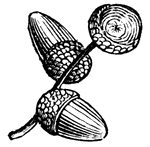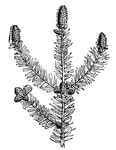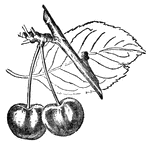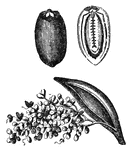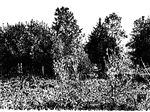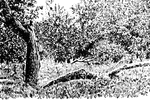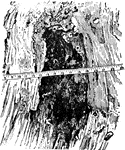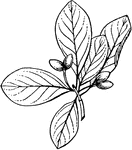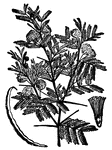
Acacia
A genus of plants of the order Leguminosae, consisting of trees or shrubs with compound pinnate leaves…
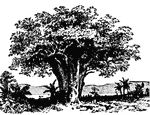
Baobab
The baobab tree or monkey-tree belongs to the order Bombaceae. It is one f the largest of trees, its…
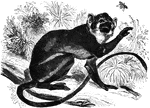
Saimiri
"Genus Saimiri. The animals of this genus are but about ten inches in length and are the most…

Masquerade of War
"The Masquerade of War. Ingenious method of disguising the masts and hulls of Commodore Porter's morter…

Thoroughfare Gap
"Thoroughfare Gap, Va., a pass in the mountains on the Manassas Gap Railroad, near Strasburg, held by…
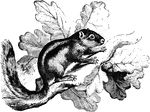
Barbary Squirrel
"Is about the size of the European squirrel, being nearly ten inches in length. It is grayish-brown,…
!["A detachment of the First South Carolina [African American] Federal Volunteers, under command of Colonel Beard, in the United States transport steamer <em>Darlington</em>, picking off Confederate sharpshooters concealed in the trees on the banks of the Sapelo River, Ga."— Frank Leslie, 1896](https://etc.usf.edu/clipart/11600/11647/aa-volunteer_11647_mth.gif)
African American Volunteers
"A detachment of the First South Carolina [African American] Federal Volunteers, under command of Colonel…

Confederate Batteries
"Fredericksburg, Va., and the Confederate batteries and pickets, as seen from Falmouth Heights, headquarters…

Harrison Mansion
"The old Harrison Mansion, Harrison's Landing, Va., the birthplace of President William Henry Harrison,…
Burnside's Corps
"The war in Virginia. Burnside's corps charging the Confederate position on the right of the enemy's…
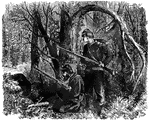
War in Tennessee
"The war in Tennessee. Federal pickets approached by Confederates in cedar bushes near Chattanooga.…

Hooker's Battle
"The war in Tennessee. Hooker's Battle above the clouds, and capture of the Confederate position on…

Fort Stevens
"The operations near Washington, scene of the fight in front of Fort Stevens, July 12th-13th, 1864.…
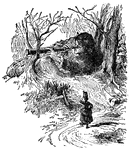
Spyglass
Gulliver being used as a national resource in the lilliputians war against thier enemy. Looking through…
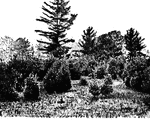
Pasture with Trees
White pines coming into a pasture. On this land trees pay better than the poor pasture.

Grove of black-locust trees
A grove of black-locust trees. Contrast with the brush in the background on an adjoining farm.
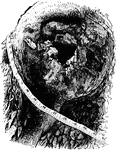
A Hole in a Tree
The decayed hole where a limb was removed. The wood-destroying fungi caused the tree to break.

Stub of a Limb of a Tree
A long stub left in pruning. The wound cannot heal. The tape shows how far the trunk is hollow. The…

Side View of Farmhouse
Scattered planting of trees pruned in artificial shapes in front of a farmhouse.

Farmhouse
A well-planted farmyard, with trees at the sides, flowers in the corners and about the house, and an…
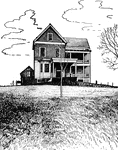
City House
A city house in the country. A low house would be better suited to sitting alone on a hill.
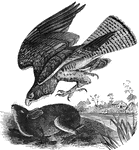
Common Buzzard of Europe
"B. vulgaris is twenty-two inches long, the head is large and the body heavy. Above, the color…
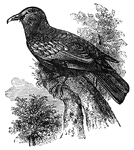
Common Roller
The common roller, which subsists on a diet of fruits and insects. It builds its nests in the holes…

Battle of the Wilderness
"The battle of the Wilderness, between General Grant and General Lee, May 5th and 6th, 1864. Our sketch…
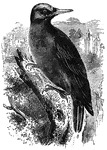
Great black Woodpecker
Chiefly making its habitat in Northern Europe, the great black woodpecker uses its long, sharp bill…
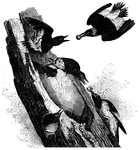
Redheaded Woodpeckers
The most common type of woodpeckers found in the United States, the red-headed woodpecker feeds on various…
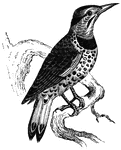
Golden-Winged Woodpecker
The golden-winged woodpecker is known for burrowing its own holes into live trees to use as a nest.
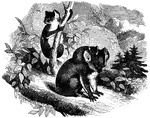
Koala
"Large as a moderate sized dog. It has long, thick and rather course fur, of an ashy-gray color; its…

Isle Aux Noix
Isle Aux Noix, in the Sorel. The sketch was made from the pilot's room of the steam-boat, about half…

Carolina Parrot
The Carolina parrot is native to Guiana, but can be found as far north as Virginia. They often travel…
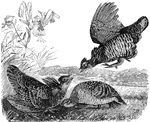
Prairie Hens
Prairie hens feed on grasshoppers, wheat, corn, seeds, and the buds of trees. They are also known as…
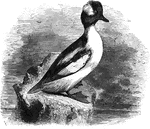
Buffle-Headed Duck
The buffle-headed duck builds its nest in the hollow of trees, and averages about thirteen inches in…
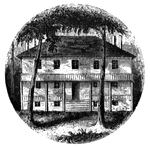
Guy Park
This was the residence of Colonel Guy Johnson, and is still standing, on the north side of the Mohawk,…

Oriskany
The battle-ground of Oriskany. This sketch was made from the eastern side of the ravine, looking west.…
![Distant view of Cherry Valley. Cherry Valley derived is name, according to Campbell, from the following circumstance: "Mr. Dunlop [the venerable pastor whose family suffered at the time of the massacre in 1778], engaged in writing some letters, inquired of Mr. Lindesay [the original proprietor of the soil] where he should date them, who proposed the name of a town in Scotland. Mr. Dunlop, pointing to the fine wild cherry-trees and to the valley, replied, 'Let us give our place an appropriate name, and call it Cherry Valley,' which was readily agreed to."](https://etc.usf.edu/clipart/13400/13460/cherry-vall_13460_mth.gif)
Cherry Valley
Distant view of Cherry Valley. Cherry Valley derived is name, according to Campbell, from the following…
Compo
Distant view of Compo. This view is from the top of a high hill northeast of the dwelling of Mr. Ebenezer…
Fitch's Point
Fitch's Point, the landing-place of the British. This view is from the west side of Gregory's Point,…

Common iguana
A large lizard, the common iguana is common to the tropical regions of the Americas. It spends much…
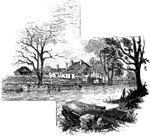
Greene and Knox Head-Quarters
"Head-quarters of Greene and Knox. This view is from the turnpike road, looking southeast. The water…

Mrs. Falls'
"Mrs. Falls'. This house, now (1850) owned by Mr. Samuel Moore, is a frame building, and stands on the…

Squirrel Tree-toad
"Is of a brownish or light ash-color, and is found under logs and the bark of decayed trees." — Goodrich,…

Violet-colored salamander
"Is five to seven inches long,; blueish-black, with bright yellow spots; habits nocturnal, living under…
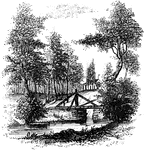
Sleepy Hollow
"Bridge over Sleepy Hollow Creek. Ichabod, according to Irving, in the Legend, returning from…
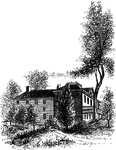
Livingston Mansion
"The Livingston Mansion. This is a view from the lawn on the north side. It is embowerd in trees and…

